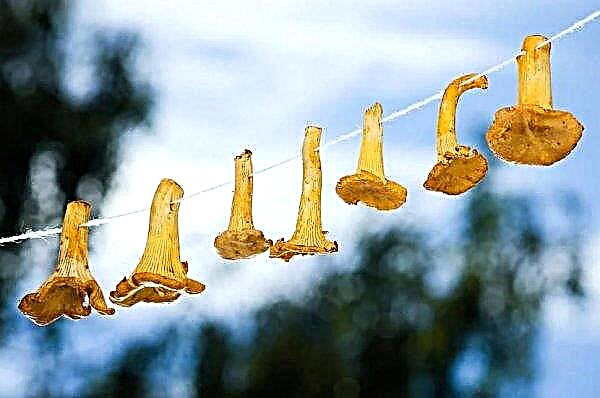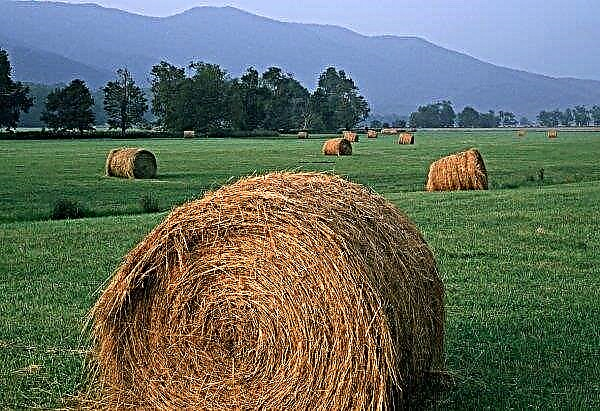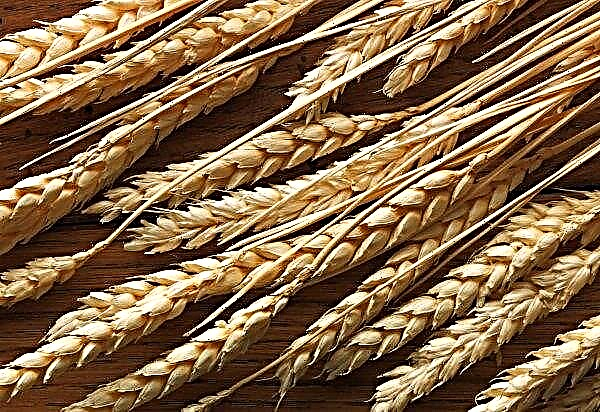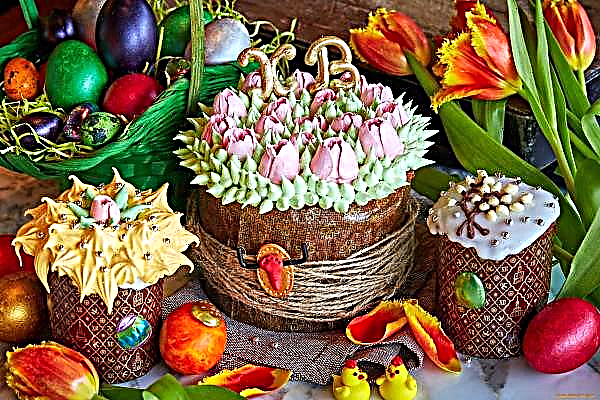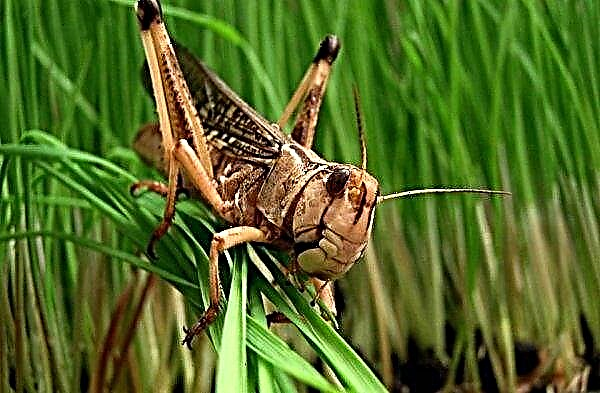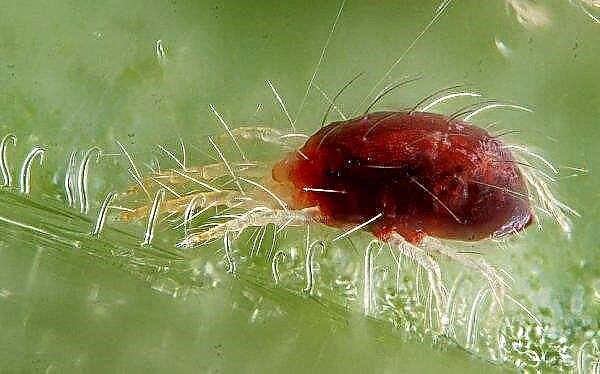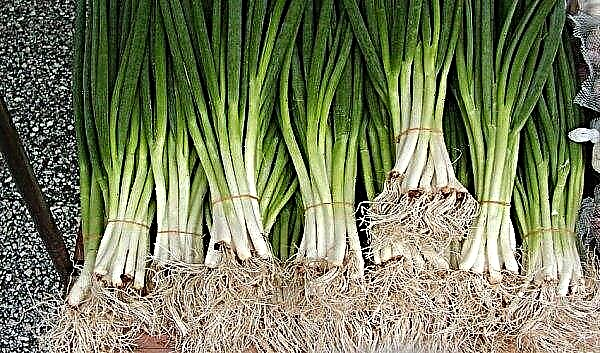Tulip is a perennial herbaceous bulbous plant of the genus Liliaceae. It can be found in mountain, steppe, desert areas, because it has good adaptability. The number of this flower has more than 80 species, many of which are grown on an industrial scale (fields, greenhouses, flower beds), they are used for landscaping landscaping, and holiday bouquets are made. The article provides a description of the Bieberstein tulip, as well as the features of its cultivation, pest and disease control.
Grade description
This variety has the following characteristics:
- the bulb is conical, 1-2 cm in diameter, with leathery dark brown scales, pubescent hairs pressed down at the apex and base;
- the stalk is thin, smooth, bluish-green, 15–40 cm tall, with two, rarely 3-4 narrow, long, grooved, basal leaves of a bluish-green hue;
- flower - single (rarely two), drooping before flowering, bright yellow, with pointed petals 2–5 cm long at the end, in sunny weather it opens wide in the form of an asterisk;
- tepals 2-3 cm long, pointed, golden yellow, filamentary hairy, of various lengths;
- fruit up to 2.5 cm long and 1.5 cm wide;
- the root system is fibrous;
- the flowering period begins in mid-April - early May, fruiting - late May - early June;
- pollinated by bees, flies and other insects;
- propagated by seeds and vegetatively (bulbs).
Growing Features
The choice of healthy planting material, proper site preparation, proper planting, quality care - all these factors contribute to the rapid growth and development of the plant.
Did you know? One of the most extravagant is the Queen of the Night tulip variety. It has a very dark purple color, for which it got its name. This unusual flower inspired Alexander Dumas to write the famous novel “Black Tulip”.
Landing rules
When planting tulip bulbs, you must adhere to these rules:
- Choose a well-lit place, protected from drafts and strong winds, without the occurrence of closely located groundwater, because high humidity is detrimental to the root system.
- The plant prefers fed loamy soil.
- The selected place must be weeded from the weeds along with the roots, dig up the soil to a depth of 25-30 cm, well leveled with a rake or a hoe (it is better to dig the soil 2-3 weeks before planting, so that it "settles down").
- Make ditches with a depth of 10-12 cm, between the rows - 25 cm, you can add overripe manure or compost (5 kg / m²), superphosphate (70 g / m²), ash (200 g / m²), bone meal (200 g) / m²). If the earth is very dry, it needs to be watered.
- Plant the bulbs at a distance of 8-10 cm from each other, sprinkle and lightly compact.
- You can plant tulips in spring or autumn (if an autumn planting was made, then you need to cover them with peat or sawdust for the winter).
 It is not necessary to press the bulbs into the soil so as not to damage the root system, and the rows are allowed to be made in any arbitrary shape. You can also add sand to the furrows for good drainage.
It is not necessary to press the bulbs into the soil so as not to damage the root system, and the rows are allowed to be made in any arbitrary shape. You can also add sand to the furrows for good drainage.The subtleties of care
To get beautiful, healthy and fragrant flowers, it is recommended to perform the following actions:
- weed around the plants from weeds, plow to a depth of not more than 5–7 cm, so as not to damage the bulbs;
- carry out regular watering of about 10 liters of water per 1 m², while loosening the soil in order to avoid the formation of a crust on it, which prevents the evaporation of excess moisture and the penetration of air to the roots;
- fertilize with minerals (preferably in the form of a solution, in accordance with the instructions for use), it is necessary to pour in the liquid at the base of the plant so that it does not fall on the leaves, in order to avoid getting burns. Top dressing is carried out in several stages - during the growth of sprouts, the formation of buds and blooming flowers;
- inspect plants for the presence of diseases and pests, conduct timely preventive work to prevent them;
- after the fruiting phase has ended (June) and when the stems are completely yellowed and dried, you can dig out tulips (if this action is done after the flowers have bloomed, then the onions will not have time to form);
- clean them from the ground, remove dry shoots, carefully cut the roots, trying not to damage the surface of the bulb, dry, sort and remove until a fresh plant in a dry, well-ventilated, cool place with an air temperature not exceeding + 17 ° С.

Pests and diseases
This variety grows well in the wild, it has the ability to adapt to weather conditions, resistant to diseases and pests.
Did you know? Tulips of various colors have their symbolic meaning, for example, red - love, yellow - wealth, white - a request for forgiveness.
But, unfortunately, at home it can be affected by such diseases and harmful insects that can accumulate in the soil during the season from other damaged cultivated plants:
- Nematodes. Small roundworms up to 1 mm, getting into the plant inhibit its growth, bulges appear on the stems, tumors and growths appear on the roots, which impede the development of the flower and the movement of moisture. Contribute to the development of fungal and viral infections that penetrate through damaged parts. Fighting these pests is very time-consuming, they use Nematorin, Fitoverm, Akarin.
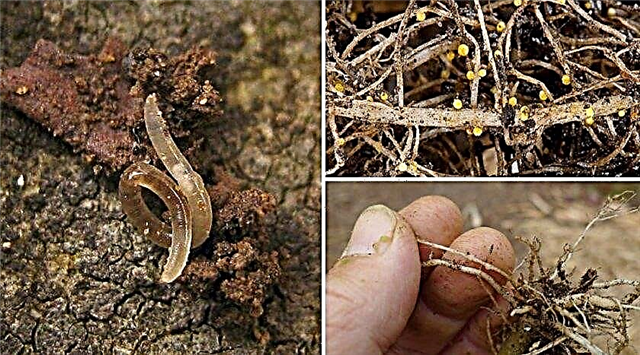
- Aphid. Small insects (up to 2 mm) have long, strong proboscis, which pierce the leaves and shoot surface. They live in colonies, feed on plant sap, thereby causing enormous damage to the plant. Eggs are laid on leaves, and winter in the roots and stems of the bush. They are carriers of infections. You can deal with these pests with the help of “Aktara”, “Fitoverm”, “Iskra”, “Tanrek” preparations.
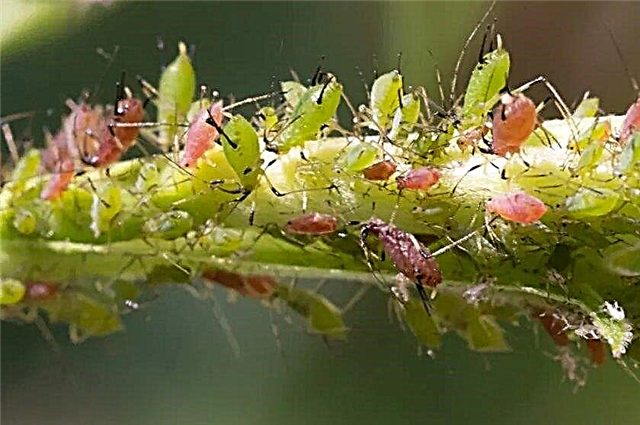
- Onion tick. This pest has a transparent, oval body shape 0.7 mm long, 0.5 mm wide, the height of the females is 1.1 mm, 4 pairs of brown paws on which are large spikes. The larva has three pairs of legs. About 800 pcs. Lay white, oval eggs in the bulbs, the larva has three pairs of legs. They live in the ground, eat the fleshy part of the tulip bulb, cause yellowing of the leaves, spread infections. For the fight using pesticides "Ditox", "Fostran", "Kinfos", "Diameter-400."
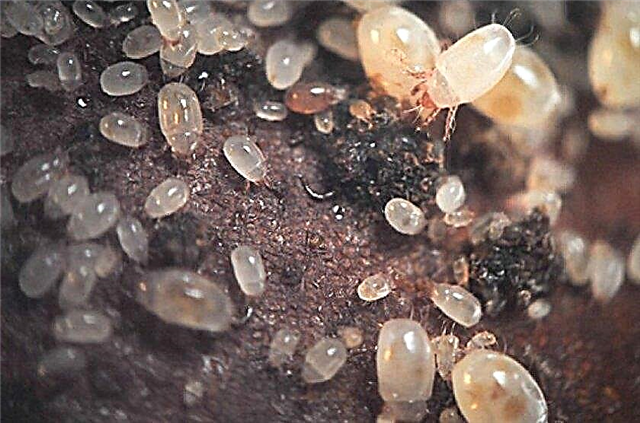
- White rot. Fungal disease caused by the fungus sclerotonia. It first affects the root neck of a tulip, then the whole plant. The ground part is covered with white coating, and the underground part is covered with mucous mass; in wet weather, the flower rots and dies. Ill tulips are treated with solutions of Bordeaux fluid, copper sulfate.
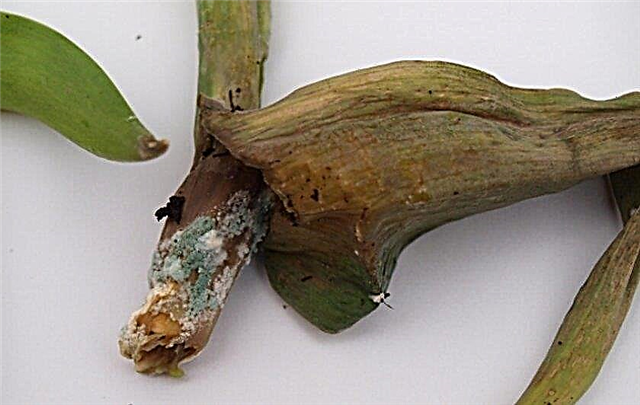
Tulip in landscaping
Bieberstein's tulips look great on a variety of flowerbeds (discounts, mixborders) and Alpine slides, because yellow flowers will decorate the spring garden, they can also be combined with other varieties of tulips.
Important! It is recommended to change the place of tulip planting every 2-3 years, then they will be large and healthy.
All the above measures for the care of Bieberstein's tulip will help not only to grow quality flowers to the delight of the grower, but also to receive good financial rewards for them when they are sold, because they are loved by many women.





